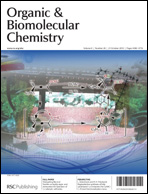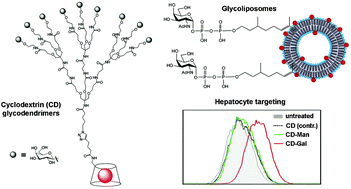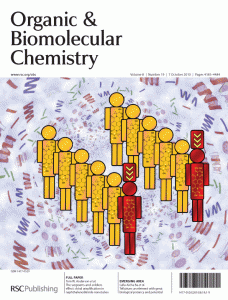This month sees the following articles in Organic & Biomolecular Chemistry that are in the top ten most accessed:-
Recent advances in transition metal-catalyzed N-atom transfer reactions of azides
Tom G. Driver
Org. Biomol. Chem., 2010, 8, 3831 – 3846, DOI: 10.1039/c005219c, Perspective
Sequential combination of Michael and acetalization reactions: direct catalytic asymmetric synthesis of functionalized 4-nitromethyl-chromans as drug intermediates
Dhevalapally B. Ramachary and Rajasekar Sakthidevi
Org. Biomol. Chem., 2010, 8, 4259 – 4265, DOI: 10.1039/c0ob00189a, Communication
Strain-promoted double-click reaction for chemical modification of azido-biomolecules
Isao Kii, Akira Shiraishi, Toshiyuki Hiramatsu, Takeshi Matsushita, Hidehiro Uekusa, Suguru Yoshida, Makoto Yamamoto, Akira Kudo, Masatoshi Hagiwara and Takamitsu Hosoya
Org. Biomol. Chem., 2010, 8, 4051 – 4055, DOI: 10.1039/c0ob00003e, Communication
Recent advances in stereoselective glycosylation through intramolecular aglycon delivery
Akihiro Ishiwata, Yong Joo Lee and Yukishige Ito
Org. Biomol. Chem., 2010, 8, 3596 – 3608, DOI: 10.1039/c004281a, Perspective
A facile method for the synthesis of oxindole based quaternary a-aminonitriles via the Strecker reaction
Yun-Lin Liu, Feng Zhou, Jun-Jie Cao, Cong-Bin Ji, Miao Ding and Jian Zhou
Org. Biomol. Chem., 2010, 8, 3847 – 3850, DOI: 10.1039/c0ob00174k, Communication
High-throughput synthesis of azide libraries suitable for direct “click” chemistry and in situ screening
Rajavel Srinivasan, Lay Pheng Tan, Hao Wu, Peng-Yu Yang, Karunakaran A. Kalesh and Shao Q. Yao
Org. Biomol. Chem., 2009, 7, 1821 – 1828, DOI: 10.1039/b902338k
In water, on water, and by water: mimicking nature’s aldolases with organocatalysis and water
Nobuyuki Mase, Carlos F. Barbas III
Org. Biomol. Chem., 2010, 8, 4043 – 4050, DOI: 10.1039/c004970k, Perspective
Organosilicon-mediated total synthesis of the triquinane sesquiterpenes (±)-beta-isocomene and (±)-isocomene
Arndt W. Schmidt, Thomas Olpp, Elke Baum, Tina Stiffel and Hans-Joachim Knölker
Org. Biomol. Chem., 2010, DOI: 10.1039/c0ob00051e
Intramolecular cycloaddition in 6,6-spiroepoxycyclohexa-2,4-dienone: simple aromatics to (±)-Platencin
Vishwakarma Singh, Bharat Chandra Sahu, Varsha Bansal and Shaikh M. Mobin
Org. Biomol. Chem., 2010, 8, 4472 – 4481, DOI: 10.1039/c004316h
Radical stability and its role in synthesis and catalysis
Johnny Hioe and Hendrik Zipse
Org. Biomol. Chem., 2010, 8, 3609 – 3617, DOI: 10.1039/c004166a, Perspective
Why not take a look at the articles today and blog your thoughts and comments below.
Fancy submitting an article to Organic & Biomolecular Chemistry? Then why not submit to us today or alternatively email us your suggestions.
Comments Off on Top ten most accessed articles in August
















![C0OB00205D[1]](https://blogs.rsc.org/ob/files/2010/08/C0OB00205D1-300x76.gif)